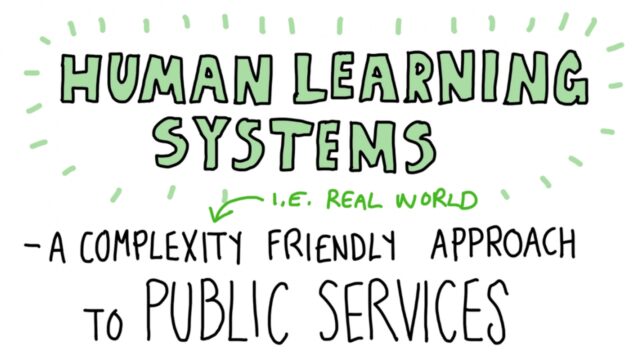
Web of wonder: Learning and simulation [Systems thinking & modelling series]
This is part 4 of a series of articles featuring the book Beyond Connecting the Dots, Modeling for Meaningful Results.
Learning
When we experience something, that experience falls somewhere between complete novelty, meaning that we can’t connect it with anything in our past experience, and complete confirmation, meaning that it represents something we already believe we completely understand. Experiences which lie somewhere between complete novelty and complete confirmation provide a basis for learning. They represent a basis for connecting to understood patterns and extending those patterns and our understanding. What results is learning1.
Consider running into a refrigerator that looks like no refrigerator you’ve ever seen before. From an initial view you are unlikely to perceive it as a refrigerator. As you inspect it and find it serves the purpose you’ve come to understand for refrigerators, or if someone tells you it’s a refrigerator, you then expand or extend your awareness of the range of patterns that constitute a refrigerator. And as Bateson said, “It’s the pattern that connects.”
A basis for flawed learning
While reading the previous paragraphs did it dawn on you that much of this pattern recognition / connection / extension learning doesn’t happen consciously? We connect with patterns and extend our knowledge at times without even being aware that it’s happening. And when this happens subconsciously there is no critical validation to accompany the learning. Because this ongoing learning happens without critical validation, there are things we learn – and come to believe – that are actually incorrect. We may have perceived patterns and extended our learning in a flawed manner. The really annoying thing is that we then act on these flawed beliefs, and when we produce results that don’t go the way we expected, we wonder why. Or even worse, we don’t actually learn from the unexpected results and correct the flawed models that served as the basis for our flawed actions.
When we try to solve problems based on flawed beliefs we typically create more problems. It has been said repeatedly that the majority of today’s problems are the direct result of yesterday’s solutions. Shouldn’t this provide a sense that we might really benefit from a better way to think about the world around us, develop better understanding, and develop solutions that don’t come back to haunt us in the future?
Simulation
While patterns can help us understand the world around us, we live in a dynamic and ever changing world in which the only real constant is change. Simulations allow us to bring the patterns we build to life and get a sense of the implications of the relations over time. It has been said that we as humans have a very limited capacity to understand the implication of two or more dynamic relations over time. To help us develop our understanding in this area we simulate the patterns we develop. Perhaps you experienced this with the previous Moose and Wolves and Sustaining the Forest models.
Next edition: Web of wonder: Three model structures.
Article sources: Beyond Connecting the Dots, Insight Maker. Reproduced by permission.
Header image source: Beyond Connecting the Dots.
Reference:
- Jantsch, E. (1980). The Self-Organizing Universe: Scientific and Human Implications. Pergamon Press. ↩



